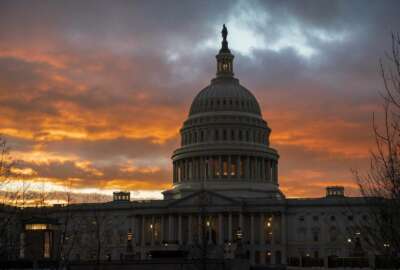
Congress agrees to 3.1% federal pay raise in 2020 spending bill
A 3.1% federal pay raise is a key feature of one of two "minibus" spending bills, which congressional appropriators unveiled Monday evening. Both the House and...
Best listening experience is on Chrome, Firefox or Safari. Subscribe to Federal Drive’s daily audio interviews on Apple Podcasts or PodcastOne.
Congress has agreed to a 3.1% federal pay raise for civilian employees next year as part of a broader spending deal that would fund federal agencies for the rest of fiscal 2020. It would also avert what could have been the second holiday-season government shutdown in as many years.
Congressional appropriators said the deal includes a 2.6% across-the-board increase in base pay with an additional 0.5% in locality adjustments, for a total average of 3.1%. If passed into law, raises would go into effect on the first applicable pay period of the new year.
The federal pay raise is a key component of one of two “minibus” spending bills, which House and Senate negotiators unveiled Monday evening as they announced the final agreement that both chambers plan to vote on this week before sending the measure to the president.
The “minibus” with the federal pay raise covers spending for the the Defense Department, as well as the departments of Homeland Security, Commerce, Justice, Treasury and others.
A second “minibus” covers the departments of Agriculture, Labor, Education, Interior, Transportation and State, as well as Veterans Affairs and Housing and Urban Development, among others.
In total, both bills detail some $1.4 trillion in government spending for 2020.
The agreement on a 3.1% federal pay raise is significant for several reasons. First, the total is in line with a 3.1% pay raise for members of the military, which Congress secured last month when it passed the current continuing resolution just before the Thanksgiving break.
And second, it’s only the second time in recent memory in which Congress has actively chosen to differ from the president on the issue of federal pay.
The 3.1% federal pay raise is a departure from the president’s proposed raise of 2.6%, which he announced back in August. The 2.6% proposal itself was a huge surprise for the federal workforce, which had expected another pay freeze after the president suggested one in his own 2020 budget proposal.
The Office of Management and Budget had described its vision to help agencies better manage existing funds to reward only the highest performing federal employees or those with critical skill sets — instead of implementing an across-the-board pay raise for all.
But once the president had reversed course on the topic, a pay raise of some kind seemed inevitable.
The House in June passed a 3.1% federal pay raise in its version of the financial services and general government appropriations bill. The Senate, however, remained silent on a pay raise, leaving congressional appropriators to conference over the final number.
Congress last differed from the White House on federal pay earlier this year, when lawmakers In February passed a 1.9% retroactive raise for civilian employees for salaries they’d already received in 2019. The raise, though it took months for agencies and payroll providers to physically implement, applied retroactively to Jan. 1. The president had originally planned a pay freeze for civilian employees in 2019.
If the 2020 adjustment does clear the president’s desk, it will be the largest federal pay raise employees have seen in at least a decade. Civilian employees last came close to such a raise back in 2008, when they received a 3.5% pay adjustment.
Scroll through the table below to see a comparison of civilian and military pay raises dating back to 1979.
The new “minibus” also freezes pay at 2019 levels for the vice president and senior political officials appointed under the Executive Schedule.
The 3.1% federal pay raise, of course, isn’t a done deal. Congress must pass and the president must sign the spending bills into law before the current funding deadline ends Friday, Dec. 20 at 11:59 p.m. Congress must agree and pass some sort of funding solution by the end of the week to avoid a second government shutdown this year.
The House is expected to vote on the spending packages Tuesday, with the Senate to shortly follow.
The National Treasury Employees Union said Monday it was “encouraged” by the news of a 3.1% raise.
“NTEU members all year have been incredibly vocal about their support for a 3.1% increase, and we are thrilled to see their advocacy made a difference,” Tony Reardon, the union’s national president, said in a statement. “Signing the raise into law this week, along with all of the appropriation bills, would bring welcome relief to federal employees and their families, who could end the year without the fear of another government shutdown.”
The National Active and Retired Federal Employees (NARFE) Association also praised the agreement on a pay riase.
“In a year that began with federal employees out of work and unpaid, a 3.1% average pay raise is a step toward recognizing the importance and hard work of federal civil servants,” Ken Thomas, NARFE national president, said in a statement. “In the short term, this increase should help the federal government compete with the private sector to secure top talent. We applaud congressional leaders for shepherding this increase in pay through the legislative process and look forward to working with Congress, the White House and federal agencies to identify and implement further strategic measures that will attract and maintain the next generation of federal workers.”
Copyright © 2025 Federal News Network. All rights reserved. This website is not intended for users located within the European Economic Area.
Nicole Ogrysko is a reporter for Federal News Network focusing on the federal workforce and federal pay and benefits.
Follow @nogryskoWFED





